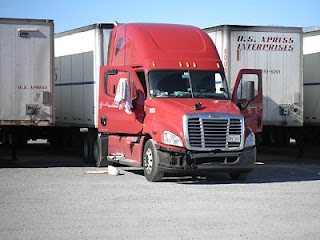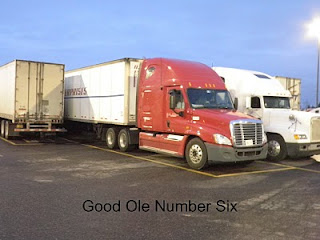I love the average driver's nomenclature of the woman truck driver noted above.
As most of you females know, the worst thing about a public bathroom is sitting down and discovering the seat is wet. The saying "If you sprinkle when you tinkle, please be neat and wipe the seat" is so apropos, but like any other attempt to curb human behavior, you just can't be successful all of the time. I have never used those seat papers. I once read somewhere that you cannot get any diseases from sitting on a public toilet seat so what's the point? However, I have not sat on a wet seat in a long time. I have developed an eagle eye for droplets.
Now, the question is, which stall. The first because most females will figure it's the most used and not use it? Or the last, or the handicapped or somewhere in between? I usually opt for the philosophy behind the first, but move down the line if it's not up to snuff.
I think we gals have an advantage when it comes to #1. We have privacy for that. We even have an edge on #2. If a guy is in a stall, I guess they know what he's doing. Of course we can give it away with noises and odors. Frankly, I don't care about that unless there's a line.
My beef is about what happens after. Rest areas seldom have paper towels. I need these for brushing my teeth and washing my face. So I now take a hand towel with me. When working in nursing homes for 3 years, I became well acquainted with effective hand washing. Well, some idiotic state, I will not mention here, got sold on a system that's totally ineffective. You put your hands in the trough. First comes soap, then comes water, then comes your boyfriend with your daughter. Just kidding...then comes hot air. The time you have to lather is no where near the 30 seconds required to remove germs.
Now it's time to exit the rest area...or truck stop or customer's lavatory and you use the handles the same people before you have. Some didn't bother to wash their hands, most didn't lather for 30 seconds. How I've not been sick or hospitalized regularly this past year is a mystery.
One last observation. Texas has the prettiest rest areas overall. They tend to be mosaics in tile but also tend to be open air between wall and ceilings so are buggy, hot or cold. The one in Laredo is awesome. I understand you can catch a ride in Laredo to Mexico in a limo for only $20 round trip. I hope to do that sometime. The "male drivers" tend to do this for cheap sex. I'm thinking shopping. I doubt it would be a good idea to do it for the tequila.















































